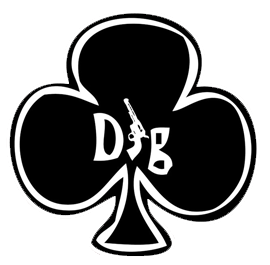The Shrine of Dig represents music that has made indelible impressions on our lives, both musically and personally. We plan to enshrine works and artists that stand out for any number of special reasons, from those glorious moments we first heard something captivating and new, through the continuous impacts of the music upon our lives. The induction ceremony involves multiple posts where we will both explore and pay tribute to the words and sounds which have been so important to us. In doing so, we share with you some music we believe is damn near infallible and absolutely worth listening to. View all

Thelonious Monk: Raise Four
Thelonious Monk and I have had a long standing relationship, but my first exposure to his music was thanks to the Erie Public Library. TWD's Kyle and I would loot the CD collection at the library and digest as much of their collection as possible (shout out to the Public Library system and CD-R technology – much love). This ritual was an important step in my own initial consumption of the jazz canon. Nevertheless, when I discovered Thelonious it was clear that I had found something groundbreaking. This was a player who had the capacity to make the piano shimmer and shine, or sound crunchy and sharp. In addition, he was a musician who trail blazed the bebop sound, but did so without any player in the subsequent generation replicating his voicings, gestures, or personal style.
The album, Underground, is characterized by its outlandish cover art, which is featured at the top of this page. Gil McKean wrote the album's liner notes and remarked about the photograph…
Although the illustration on the album cover may seem a trifle bizarre to the uninitiated, knowing intimates of Monk will recognize the setting as that of his studio, an important part of his Manhattan apartment. In this atelier are the memorabilia of an adventurous and richly rewarding life. Most noticeable, perhaps, is the Nazi storm trooper. As real as he looks, he is stuffed, a trophy of Monk's forays as a member of the French Resistance movement in World War II, the famed FFI.With a cry of "Take that, you honkie Kraut!" Capitaine Monk shot him cleanly and truly through the heart. He weighed 187 pounds, dressed.
Thelonious' only pet is the cow who answers to the name Jellyroll and has the run of the apartment. It is interesting to know that Capitaine Monk had access to a piano throughout the combat and would never go on a mission without warming up with some forty or fifty choruses of "Darkness on the Delta." The field telephone on the wall, a memento of Normandy, now serves as a direct line to Le Pavillon in the event he wishes to order a delivery of French soul food.
The rest of the objects are really almost self explanatory – the Nazi battle flag he captured at Nuremburg, the dynamite he used so often on key objectives in Germany, the grenades, machine pistol, the .45 automatic – all of them bring tears of nostalgia to Monk's eyes as he thinks of action-packed years gone by. He was part of the underground then – for years in post-war America his piano was part of the underground of jazz. Now, and indeed for the past few years, this jazz giant is emerging as the great artist he has always been, one of the most inventive jazzmen in history.
Actually, the title of this album, UNDERGROUND is something of a misnomer – Monk surfaced long ago! He has been committing thelonious assaults on certain hidebound enclaves of jazz since the mid-Forties, and the attacks are beginning to tell. Oh yes, about the girl with the firearm in the background. No explanation was asked, nor was one forthcoming.
– Gil McKean.
This album is also noted as being the final release to feature the Thelonious Monk Quartet which was comprised of:
Thelonious Monk – Piano
Charlie Rouse – Tenor Sax
Larry Gales – Bass
Ben Riley – Drums
John Hendricks (vocals) also makes an appearance on the final cut In Walked Bud. Furthermore, the album is noted for featuring a collection of new works from the maestro Monk after a compositional hiatus. For me, what makes this album so crisp and immediately Monk is the instrumental articulation. The musicians attack each note with heavy fingers or a thick tongue, and the sounds they produce are fat pearls that pop off the record and punch your ears right in the cochlea.
This is an album of undying excitement and worth. If you don't already have and love this record you can find it at the itunes store here or at your local record shop. I found my LP copy at the wonderful Normals in Baltimore MD.
Dizzie, he was screaming,
Next to O.P. who was beaming,
Monk was thumping,
Suddenly in walked Bud
and then they got into somethin'.
Go get a copy of this gem and get into somethin' for yourself. You Dig?

